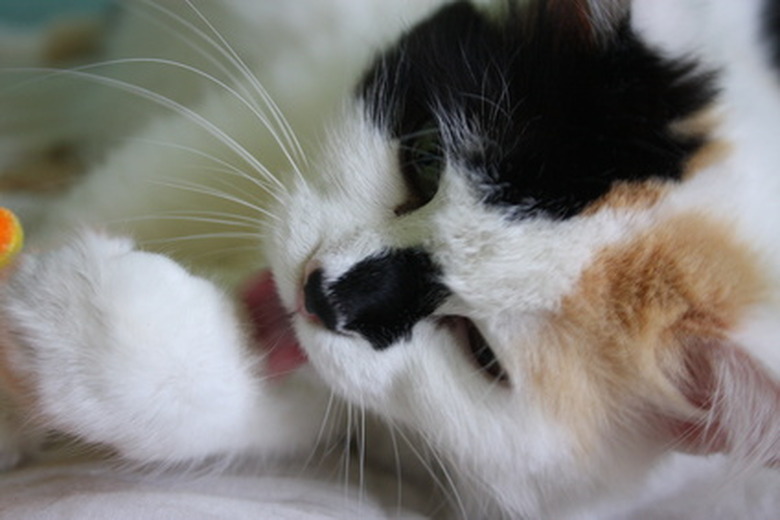Cat Hairball Emergency Treatment
While hairballs are usually harmless to cats, in rare occasions they can be dangerous. It's important as a cat owner to know the signs that your cat may be suffering from a lodged hairball, and how to help your cat pass a hairball. Solutions include having a hair ball gel, a substance sold in pet stores or purchased from the vet, on hand to help in an emergency. If prolonged stress or trauma continues, definitely head to the veterinary clinic. Recognizing cat hairball impaction symptoms is important. However, healthy cats are able to cough up or pass most hairballs.
What is a hairball?
What is a hairball?
Hairballs are the result of cats grooming themselves, which is normal cat behavior. As a cat grooms, she swallows loose hair and tiny projections on her rough tongue push the fur down her throat. However, the keratin the fur is made of isn't digestible. So the fur must pass through the digestive track, which it usually does, or be coughed back up as a long goopy mass.
Don't think your cat won't get hairballs because she has short hair, or because you don't see her grooming excessively. Virtually all cats get hairballs from licking their fur to clean themselves. The fur accumulates in their stomachs and a few things can happen: The cat can vomit up the hairball or pass it in a bowel movement, or it can become lodged inside the cat's intestines.
Cat hairball symptoms
Cat hairball symptoms
Cat hairball symptoms are sometimes obvious and short. Most often the cat will start gagging and coughing then the messy hairball appears quickly. Often, you'll only know that your cat has had a hairball after it vomits up the plaque of fur.
Sometimes, however, hairballs become stuck inside a cat. Your cat may display some symptoms: The cat might exhibit a repeated dry cough, or might retch after eating. Some cats may be fatigued, depressed or uninterested in food. These are possible cat hairball impaction symptoms and are dangerous.
When your cat is displaying those symptoms, it's possible that a hairball may have passed from his stomach into his intestine. That could cause a life-threatening blockage in the intestinal tract. The blockage can cause your cat to become dehydrated and malnourished. Blockages require immediate vet attention.
Cat hairball treatment
Cat hairball treatment
If you suspect your cat is suffering from a hairball, something you can do at home is give her some hairball gel, which you can buy at most pet stores. Put the hairball gel on your cat's lip or paw and she will ingest the substance through licking. The gel will coat your cat's intestines, which can help her to pass the hairball.
It isn't a bad idea to give your cat hairball gel once or twice a week, especially if she grooms often. If that doesn't work, take your cat to the veterinarian. Many pet food companies manufacture food specially formulated to help your cat pass a hairball, and your vet can guide you to the best prescription diet.
Cat hairball prevention
Cat hairball prevention
The best treatment for hairballs is prevention. Brushing your cat will reduce the amount of loose hair she ingests during grooming. In addition to cat food diets designed to help cats pass hairballs, simply increasing your cat's fiber intake also can help. Adding canned pumpkin to your cat's food will increase the fiber content.
Keeping your house clean is a big help, as well; if your cat eats bits of string or thread off the floor, those can get wrapped up with the hairball and make it much worse. Treating your cat for fleas also can reduce fur balls. When your cat has fleas, she will lick more as she tries to rid herself of the pests.
